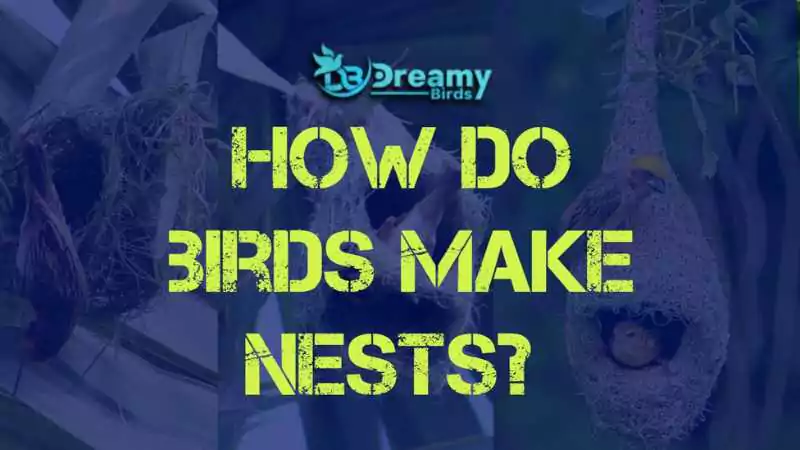Did you know that some birds spend weeks crafting their homes, while others opt for a simple scrape on the ground? Ever wondered how they choose their materials or where they learn these remarkable skills?
Birds gather materials like twigs, grass, feathers, and mud, crafting nests tailored to their species and habitat. These cozy structures shield eggs and hatchlings. The process involves site selection, material collection, skilled construction, and adaptive learning, revealing avian ingenuity.
In the enchanting world of avian architects, there’s more than meets the eye. Join us as we uncover the secrets of how do birds make nests and address a curious problem along the way. Get ready to soar through the intricate world of bird nests as we unveil their artistry and ingenuity.
What Materials Do Birds Use to Build Nests?
In the intricate world of bird nest construction, the choice of materials plays a crucial role. Birds are ingenious in their selection, utilizing what’s readily available in their environment. Twigs, often the backbone of many nests, provide structure and support. Grasses, both soft and pliable, are skillfully woven to create cozy interiors.
Feathers, with their insulating properties, offer warmth and comfort to the nest’s occupants. Some birds take it a step further, incorporating mud into their designs. This not only strengthens the nest but also helps regulate humidity during incubation.
The variety of materials used varies based on factors such as bird species, habitat, and availability. Larger birds might haul hefty sticks and branches, while smaller ones delicately pluck soft plant parts or animal fur to line their nests.
It’s remarkable to think that each twig, blade of grass, or feather serves a specific purpose in the grand design. As we uncover the secrets of “How Do Birds Make Nests,” we’ll witness nature’s architectural wonders in action and gain a deeper appreciation for these avian engineers.
How Do Birds Make Nests? – Step by Step
Creating a nest is a meticulous process that varies from species to species, yet there are common steps in the construction of these avian abodes.
Step 1: Site Selection
Birds are savvy real estate agents, carefully choosing a safe and sheltered spot for their nests. This could be in the fork of a tree, deep within shrubbery, or even high up on a cliff ledge. The location must provide protection from predators and the elements.
Step 2: Material Gathering
With the location secured, the next phase begins. Armed with only their beaks and, occasionally, their feet, birds set out to collect materials. Twigs, grass, and other available items are carefully chosen for their specific attributes.
Step 3: Construction Techniques
The real craftsmanship begins as birds craft, weave, pack, smooth, stack, and shape their nests. They use the gathered materials to create a solid foundation, weaving and intertwining to form the structure.
Step 4: Lining the Nest
A soft and cozy interior is essential for the comfort of eggs and hatchlings. Birds utilize materials like moss, feathers, or animal fur to create a warm, inviting space. The interior is carefully pressed into a cup shape by the bird’s wings and beak.

As we unravel the intricate process of nest-building, you’ll gain a deeper understanding of the avian architects and their remarkable abilities. Join us on this journey to discover the artistry behind each nest.
You can also make a bird nest. Want to know how? If so, read this article on ‘how to make a bird nest.
Different Types of Bird Nests
Birds are not limited to a one-size-fits-all approach when it comes to nest construction. They exhibit a remarkable diversity in their architectural styles, tailoring their nests to suit their specific needs and environments. Here, we’ll explore the fascinating array of nest types that birds employ:
Cup Nests:
Cup nests are comfy homes for many backyard birds like robins, warblers, finches, and cardinals. These nests are shaped like cups and are usually placed in the nooks of trees or hidden in bushes. They’re simple but practical. When it comes to building these nests, the ladies often do most of the work, but the guys might help by bringing twigs and stuff.
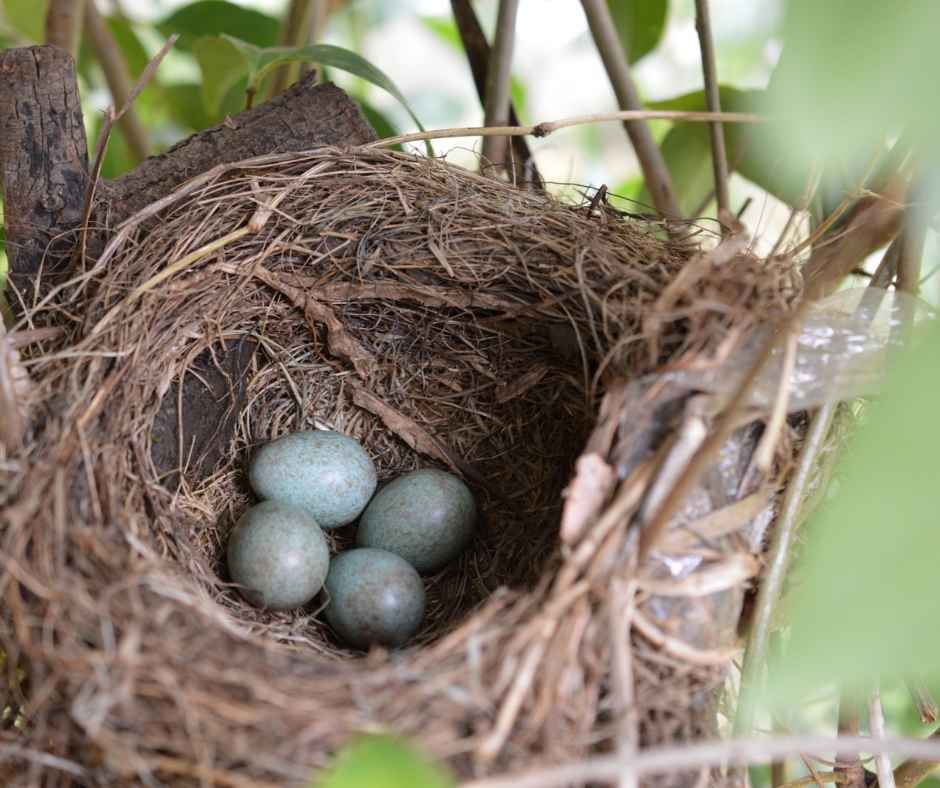
Woven Nests:
Weaver birds and orioles are like expert crafters in nature. They create fancy nests that show off their weaving talents. They use things like grass, straw, and even spider webs to make hanging homes that look like domes or pouches. When it comes to making these nests, male weaver birds are the leaders. They make impressive designs to win over female birds.
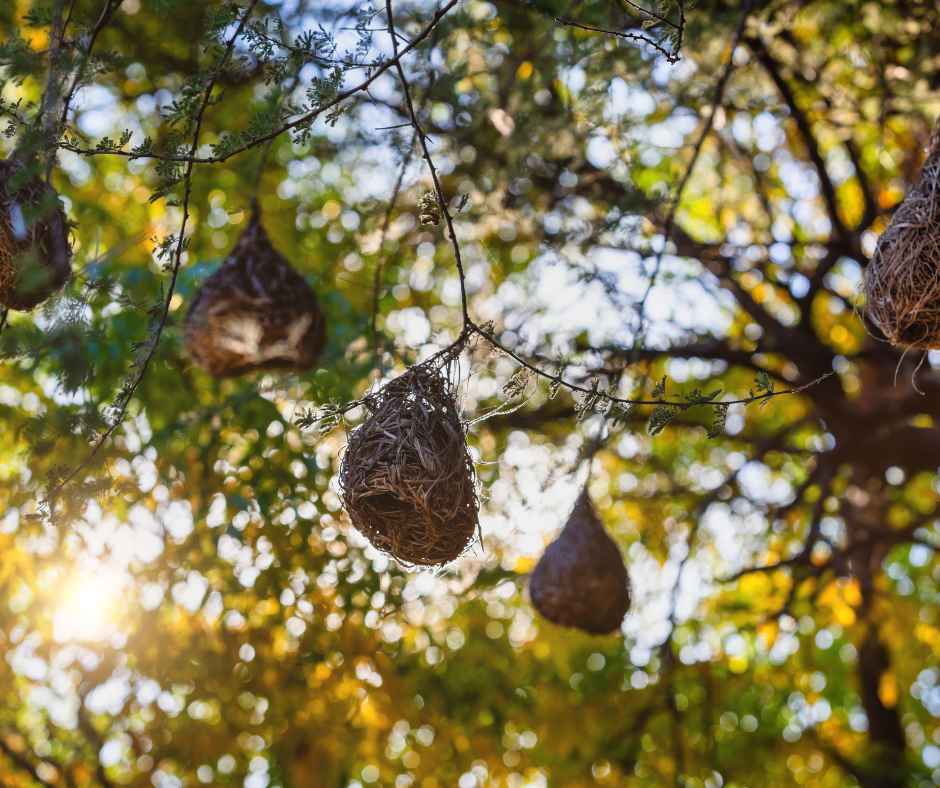
Cavity Nests:
Woodpeckers, nuthatches, and certain waterbirds, such as wood ducks, are experts at making homes in tree cavities. Some of them create new hollow spaces in old, rotting tree trunks, while others reuse holes left by other birds. These nests are cozy and warm, often lined with soft feathers and down for extra comfort.

Pellet Nests:
Swallows, house martins, and purple martins take a unique approach by constructing cup-shaped nests using up to 1,000 pellets of wet mud. Pairs work together to build these nests against vertical surfaces like walls or the undersides of bridges. Repairing existing nests is preferred to starting afresh.
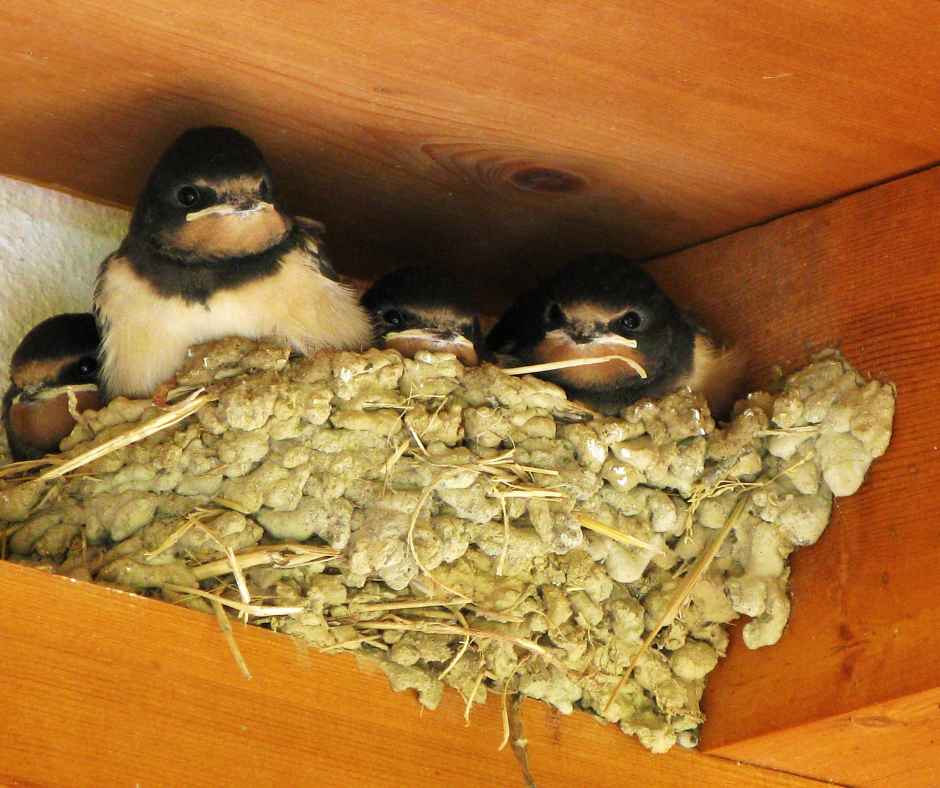
Giant Nests:
Some birds go big when it comes to nest-building. Storks, herons, and birds of prey like bald eagles and ospreys create large, messy platforms using strong sticks. These shallow nests have a slight dip where the eggs are laid. Nest-building is a cooperative effort, with males sourcing materials and females doing most of the construction work.
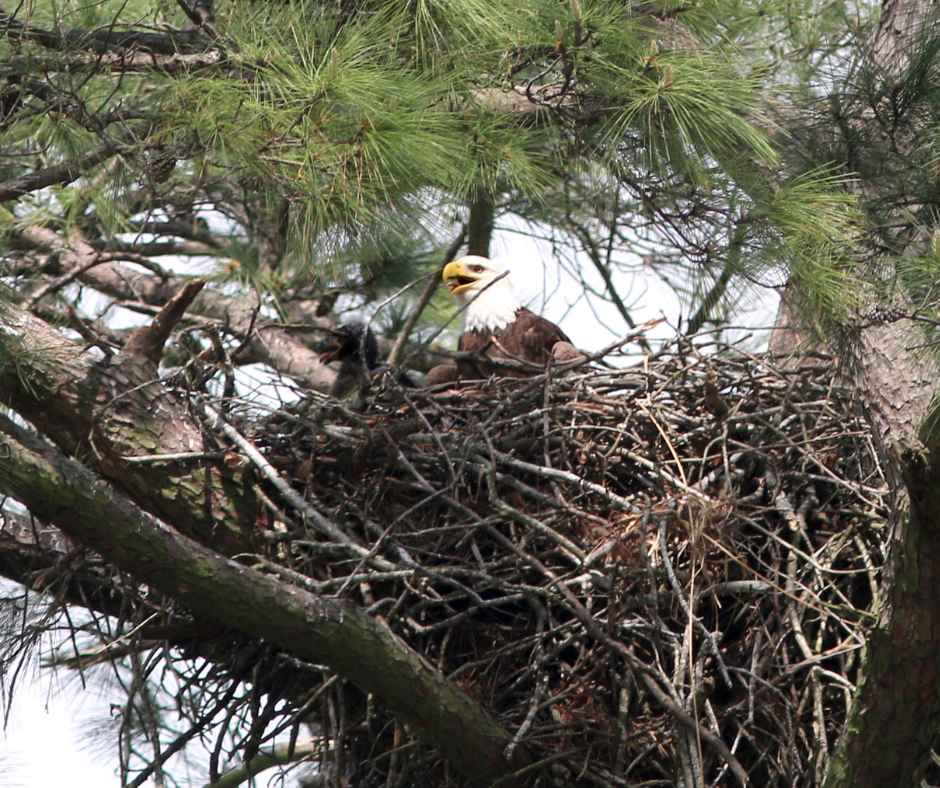
Each nest type reflects the unique needs and abilities of the birds that create them. As we delve deeper into the world of avian architecture, you’ll gain a greater appreciation for the diverse and intricate designs these birds employ.
How Do Birds Know How to Build Nests?
The art of nest-building in the avian world is nothing short of extraordinary. But how do birds acquire this remarkable skill?
Birds’ nest-building combines instinct and learning, with species-specific variations. They observe and refine their skills, adapt to diverse environments, and exhibit resourcefulness. Whether innate or acquired, birds are skilled builders.
Is it instinctual, or do they learn through experience and observation? Let’s unravel this intriguing aspect of avian behavior.
Instinct vs. Learning:
One prevailing theory is that birds are born with the innate ability to construct a certain type of nest. It’s as if the blueprints are imprinted in their genes. However, the specifics of their nest-building can vary even within the same species, suggesting that learning and adaptation play a role.
Observational Learning:
Another idea is that birds learn by watching other nests. They pick up tips on what makes a good nest and what’s necessary. It’s kind of like birds going to school and learning from their parents and older birds in the family.
Practice Makes Perfect:
Birds often embark on early nest-building attempts, which may not always yield perfect results. These initial efforts are stepping stones toward constructing more refined and efficient nests. Experience teaches them which materials are best suited and how to craft sturdier structures.
Perfectionists and Rebuilders:
Some birds, like the Australian Willie wagtail, are renowned perfectionists. If they’re dissatisfied with their progress during nest construction, they may even destroy their nest mid-way and start anew. Others, faced with a failed nest, instinctively begin the process again until success is achieved.
Adaptive Learning:
Adaptive learning is also evident when a bird encounters different environments. They may adjust their nest-building techniques based on the materials and conditions available to them. This flexibility allows them to thrive in diverse habitats.
When we look at how birds build nests, we can see how smart and flexible they are. Whether they know it from the start or learn along the way, one thing is certain: birds are resourceful and tough builders.
You can also read: How to Make a Bird Nest
Why Do Birds Build Nests in Trees?
Have you ever wondered why birds have a preference for tree-bound nests? This architectural choice is far from arbitrary; it’s driven by a multitude of advantages.
Birds choose tree-bound nests for safety from ground predators, easy access to food, protection from harsh weather, and strategic vantage points. It’s a smart choice in avian real estate for raising families, offering advantages that are anything but random.
Safety from Predators: Trees provide a natural fortress against ground-dwelling predators like snakes and mammals. Elevating their nests out of reach ensures the safety of eggs and hatchlings.
Accessibility: Nesting in trees offers easy access to food sources like insects and fruits. Birds can efficiently forage for their young without venturing far from the nest.
Protection from the Elements: The canopy of a tree acts as a shield, offering shelter from harsh weather conditions such as rain, wind, and excessive sunlight.
Strategic Vantage Point: Elevated nests also serve as excellent vantage points for birds to survey their surroundings and keep an eye out for potential threats.
In the world of avian real estate, trees are prime locations for raising families. As we explore the wonders of bird nest-building, you’ll discover that these choices are anything but random.
How Long Does It Take a Bird to Make a Nest?
Birds typically take from a few days to two weeks to build a nest, depending on species and complexity. This process varies with environmental factors and nest design.
Nest-building is a task that varies significantly across bird species, influenced by factors like nest complexity and environmental conditions. For some birds, like the industrious bluebird or the resourceful robin, constructing a nest can be a matter of a few days.
These birds often opt for simpler designs, utilizing materials like grass and twigs, which are readily available and easy to assemble. The swift nature of their building process is essential, especially during breeding seasons when time is of the essence.
On the other hand, certain bird species have more elaborate nesting habits that extend the construction period. For example, a bird-like weaver, known for its intricate nest designs, may spend several weeks meticulously weaving and knotting materials together.
These complex structures are not only a testament to the bird’s skill but also provide enhanced protection and comfort for the eggs and hatchlings. The variation in nest-building techniques and timelines showcases the diversity of avian architecture and the adaptability of these feathered engineers to their surroundings.
People Also Asked
What month do birds build nests?
Birds usually build nests in the springtime, which is around March to May in most places. During this season, they find safe and cozy spots to create their nests and raise their chicks.
Do birds build nests only to lay eggs?
Birds build nests not just for laying eggs but also to keep their eggs safe and warm. Nests provide protection and a comfortable place for baby birds to grow.
Which bird makes the best nest?
Different birds have different nest-building skills. The bird known for making excellent nests is the weaverbird. They weave intricate nests from grass and leaves.
Does a bird sleep in a nest?
Yes, birds do sleep in their nests. Nests are like their cozy beds where they rest at night, keeping them safe and warm. It’s like their birdy bedroom!
Wrap Up
Our journey into the world of “How Do Birds Make Nests” has unveiled the artistry of avian architecture. From material selection to construction, we’ve marveled at their adaptability. We’ve explored diverse nest types and pondered whether nest-building is instinct or learning.
Birds aren’t just builders; they’re lifelong learners, constantly improving. Understanding their behavior reveals nature’s resilience and ingenuity. Next time you spot a nest, see it as a masterpiece.
This journey invites further exploration of birds and their nests—an enchanting realm of artistry and engineering. There’s always more to discover.

